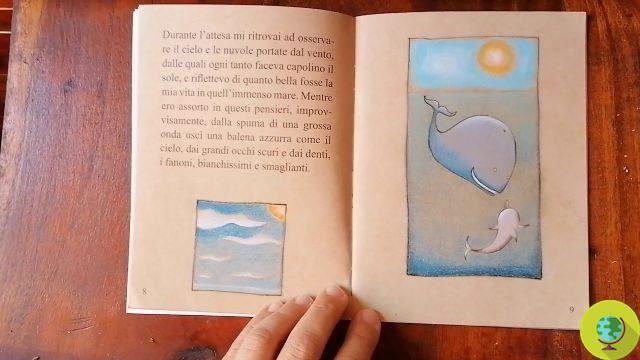
He played and swam with both adult whales and their cubs. He rubbed his muzzle against the immense bodies and was reciprocated affectionately. In 2011, ecologists Alexander Wilson and Jens Krause, of the Leibniz-Institute of Freshwater Ecology and Inland Fisheries in Berlin were indeed very surprised to find that in the sea surrounding the Azores, off the coast of Portugal, within a group of sperm whales (Physeter macrocephalus) there was an adult bottlenose dolphin (Tursiops truncatus), suffering from a spinal deformity.
He is about to end up run over, his mother saves him
He played and swam with the whales. He rubbed his muzzle against the immense bodies and was reciprocated affectionately for the gesture. In 2011, the ecologists Alexander Wilson and Jens Krause, of the Leibniz-Institute of Freshwater Ecology and Inland Fisheries in Berlin were indeed very surprised to discover that in the sea surrounding the Azores, off the coast of Portugal, within aggroup of sperm whales (Physeter macrocephalus) there was an adult bottlenose dolphin (Tursiops truncatus), suffering from a spinal deformity.
Among terrestrial animals, interactions between different species are not uncommon. These alliances, mostly temporary, are born for the need to feed, or to protect themselves against predators. But they could also satisfy a desire for the company of other animals. However, such behavior has never been observed between sperm whale and dolphin, although both are very sociable and infinitely sensitive animals.
This association could have begun, the experts suggest, thanks to "wakeriding", or behavior that dolphins adopt when they ride the waves left by boats or, indeed, by large cetaceans such as whales. In short, it could all have been born as a simple game. Subsequently, the particular shape of the spinal column of the dolphin in question would have played a decisive role in initiating this special relationship with the large and slow whales.
Maybe the cetacean, suffering from a deformity, he could not keep up, or was targeted by other members of his group of dolphins, the researchers suppose without any certainty. Or again he may have been regarded as non-threatening and therefore put to to "babysit" the little ones (Sperm whales alternate dives between group members, always leaving an adult close to the surface to watch the younger ones, who cannot dive to great depths for a long time).
The truth, however, is that asking why whales adopted an animal of another species among themselves is a million-dollar question. will forever remain unanswered, giving even more charm to our fantastic animal kingdom.
Roberta Ragni


























